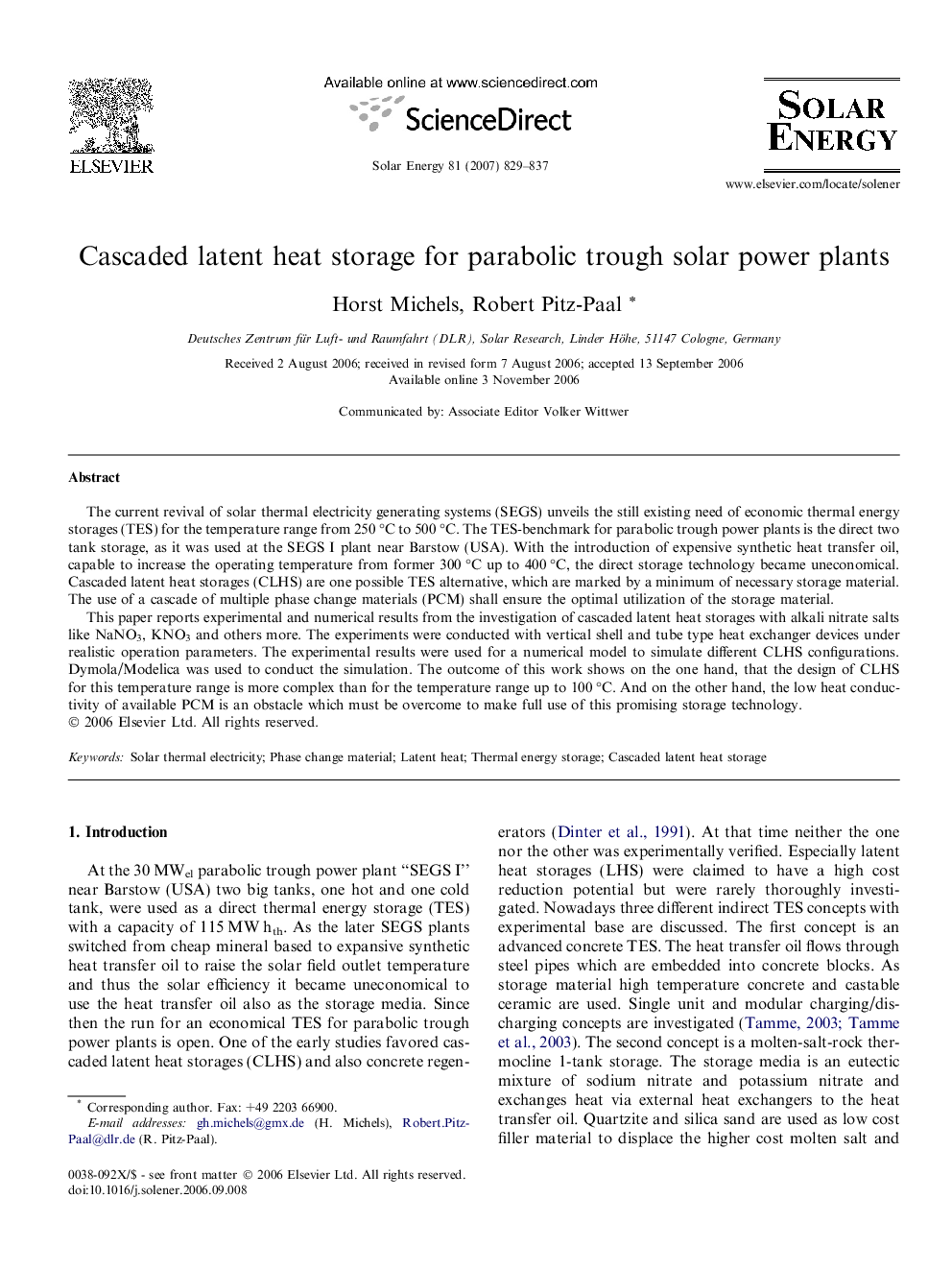| Article ID | Journal | Published Year | Pages | File Type |
|---|---|---|---|---|
| 1551708 | Solar Energy | 2007 | 9 Pages |
The current revival of solar thermal electricity generating systems (SEGS) unveils the still existing need of economic thermal energy storages (TES) for the temperature range from 250 °C to 500 °C. The TES-benchmark for parabolic trough power plants is the direct two tank storage, as it was used at the SEGS I plant near Barstow (USA). With the introduction of expensive synthetic heat transfer oil, capable to increase the operating temperature from former 300 °C up to 400 °C, the direct storage technology became uneconomical. Cascaded latent heat storages (CLHS) are one possible TES alternative, which are marked by a minimum of necessary storage material. The use of a cascade of multiple phase change materials (PCM) shall ensure the optimal utilization of the storage material.This paper reports experimental and numerical results from the investigation of cascaded latent heat storages with alkali nitrate salts like NaNO3, KNO3 and others more. The experiments were conducted with vertical shell and tube type heat exchanger devices under realistic operation parameters. The experimental results were used for a numerical model to simulate different CLHS configurations. Dymola/Modelica was used to conduct the simulation. The outcome of this work shows on the one hand, that the design of CLHS for this temperature range is more complex than for the temperature range up to 100 °C. And on the other hand, the low heat conductivity of available PCM is an obstacle which must be overcome to make full use of this promising storage technology.
